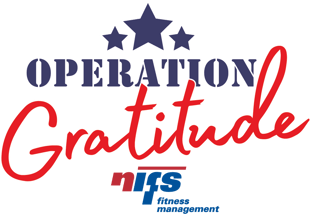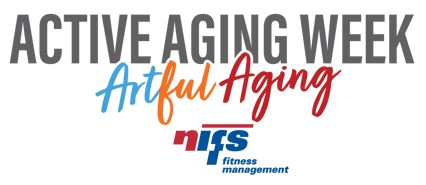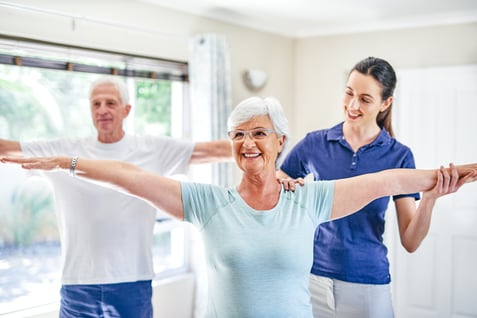 Think about the last time you took a walk and really noticed how your body felt. Were you light on your feet, or did you feel like you were leaning forward or shuffling a bit? How we hold and move our bodies affects how steady, strong, and comfortable we feel.
Think about the last time you took a walk and really noticed how your body felt. Were you light on your feet, or did you feel like you were leaning forward or shuffling a bit? How we hold and move our bodies affects how steady, strong, and comfortable we feel.
“Walking tall” is not about looking a certain way, its about supporting your body so movement feels natural and secure. Three things help with that: confidence, a supportive core, and gentle cardiovascular activity like walking.
Confidence Begins with Awareness
Confidence in movement starts with simply paying attention to how your body is aligned. Imagine creating space between your ribs and hips, softening your shoulders, and letting your gaze rise. This position helps you move more freely and take steadier steps. It also allows for easier breathing and more efficient movement.
Your Core Helps You Stay Steady
The core includes the muscles of the abdomen, hips, lower back, and pelvis. These muscles work together to keep you steady while you sit, stand, and move. A supported core helps with balance, reduces stress on your back, and makes everyday tasks feel easier.
Here are a few gentle core activities you can try:
- Seated Posture Hold
Sit near the front of a chair. Keep your feet flat on the floor. Lengthen your spine and gently draw your lower belly inward. Hold while breathing for 10 seconds. Repeat 5 to 8 times. - Slow Standing March
Stand with support from a counter or sturdy chair. Slowly lift one knee, set it down, then lift the other. Move with slow control. Perform 10 to 20 marches. - Weight Shift Exercise
Stand upright with both feet under your hips. Gradually shift your weight to one foot while keeping your posture tall. Then shift back to center and to the other foot. This helps train balance and core coordination.
Cardio Supports Energy and Ease
Walking is one of the most supportive activities for healthy aging. You do not need to walk fast or for long periods. A few short, comfortable walks each day can support heart health, boost mood, and help maintain independence. Focus on an easy pace and smooth, steady steps.
Bringing It All Together
Standing tall, using your core, and moving consistently throughout the day can help you feel more balanced and confident. Small changes practiced regularly add up. Begin with one moment of awareness at a time, and let that confidence grow with every step.


 Flexibility is often overlooked in fitness training, but Jabbar Harris another one of our dedicated fitness specialists knew just how powerful it could be. He led the flexibility portion of the superpowers program and guided residents through regular stretching routines designed to safely increase their range of motion, and comfort. One of his participants, Olivia Q., experienced dramatic improvements going from four inches short of her toes to reaching two inches past them - that's a 150% increase in flexibility! She shared with Jabbar that performing the stretches most days of the week not only improved her flexibility but also alleviated soreness in her lower back! Olivia's lower back discomfort went from a self reported “seven” to a “three”. Since completing the Superpowers program, Olivia has continued to incorporate stretching into her daily routine to maintain her new superpower.
Flexibility is often overlooked in fitness training, but Jabbar Harris another one of our dedicated fitness specialists knew just how powerful it could be. He led the flexibility portion of the superpowers program and guided residents through regular stretching routines designed to safely increase their range of motion, and comfort. One of his participants, Olivia Q., experienced dramatic improvements going from four inches short of her toes to reaching two inches past them - that's a 150% increase in flexibility! She shared with Jabbar that performing the stretches most days of the week not only improved her flexibility but also alleviated soreness in her lower back! Olivia's lower back discomfort went from a self reported “seven” to a “three”. Since completing the Superpowers program, Olivia has continued to incorporate stretching into her daily routine to maintain her new superpower. 
 At NIFS, we believe in the power of movement. That’s why our partnership with
At NIFS, we believe in the power of movement. That’s why our partnership with 
 November marks COPD Awareness Month, a time to raise awareness of Chronic Obstructive Pulmonary Disease (COPD), a condition affecting millions worldwide. COPD is a chronic lung disease that makes it hard for air to move in and out of the lungs, making it hard to breathe. With COPD, everyday tasks can feel challenging, leaving many breathless and less motivated to stay active. While COPD is irreversible, regular exercise can help manage symptoms and improve quality of life.
November marks COPD Awareness Month, a time to raise awareness of Chronic Obstructive Pulmonary Disease (COPD), a condition affecting millions worldwide. COPD is a chronic lung disease that makes it hard for air to move in and out of the lungs, making it hard to breathe. With COPD, everyday tasks can feel challenging, leaving many breathless and less motivated to stay active. While COPD is irreversible, regular exercise can help manage symptoms and improve quality of life.
 Are your fitness and wellness programs reaching your residents, but now you’re wondering how to take your community’s reputation to the next level by demonstrating an even bigger commitment to a healthy, active lifestyle campus-wide? Perhaps it’s time to incorporate a staff component into some of your resident fitness and wellness initiatives! There are several benefits of employees participating in challenges or broader wellness initiatives with residents in your community settings, here are the top 5!
Are your fitness and wellness programs reaching your residents, but now you’re wondering how to take your community’s reputation to the next level by demonstrating an even bigger commitment to a healthy, active lifestyle campus-wide? Perhaps it’s time to incorporate a staff component into some of your resident fitness and wellness initiatives! There are several benefits of employees participating in challenges or broader wellness initiatives with residents in your community settings, here are the top 5!
 We know that practicing gratitude can have profound effects on our health and wellbeing, but in our fast-paced lives, it’s easy to brush off and overlook all of the good around us. Because of this, NIFS staff across the country took the month of November, in the spirit of Thanksgiving, to give thanks and practice gratitude with their residents through our own Operation Gratitude program. Some of the popular offerings and events included a month-long self-care calendar,
We know that practicing gratitude can have profound effects on our health and wellbeing, but in our fast-paced lives, it’s easy to brush off and overlook all of the good around us. Because of this, NIFS staff across the country took the month of November, in the spirit of Thanksgiving, to give thanks and practice gratitude with their residents through our own Operation Gratitude program. Some of the popular offerings and events included a month-long self-care calendar, 
 As the seasons change and leaves take on vibrant hues of red, yellow, and orange we are reminded that much like an artist, we can craft our lives in beautiful ways, and what better time to celebrate that reminder with our senior residents than during Active Aging Week? Active Aging Week, celebrated annually, shines a light on the importance of maintaining an active and engaged lifestyle as we age. This year, at NIFS, we’ve decided to focus on “aging artfully” and help the residents in the communities that we partner with age well through embracing their creativity.
As the seasons change and leaves take on vibrant hues of red, yellow, and orange we are reminded that much like an artist, we can craft our lives in beautiful ways, and what better time to celebrate that reminder with our senior residents than during Active Aging Week? Active Aging Week, celebrated annually, shines a light on the importance of maintaining an active and engaged lifestyle as we age. This year, at NIFS, we’ve decided to focus on “aging artfully” and help the residents in the communities that we partner with age well through embracing their creativity..jpg?width=467&name=GettyImages-1225625994%20(1).jpg) In
In 
 We already know that exercise is a key contributor to a healthy lifestyle overall, but for those with Parkinson’s Disease (PD) this is no exception! In fact, exercise is extremely critical for people with PD, and
We already know that exercise is a key contributor to a healthy lifestyle overall, but for those with Parkinson’s Disease (PD) this is no exception! In fact, exercise is extremely critical for people with PD, and 
 As you might know, just the fear of falling can have significant and lasting impact on older adults or family members’ quality of life. In fact, the fear itself is a risk factor for falls. The good news is that falls can be prevented through balance-specific training and education, which is why NIFS has adopted a comprehensive balance-training method that goes far beyond simply offering balance-training group fitness classes.
As you might know, just the fear of falling can have significant and lasting impact on older adults or family members’ quality of life. In fact, the fear itself is a risk factor for falls. The good news is that falls can be prevented through balance-specific training and education, which is why NIFS has adopted a comprehensive balance-training method that goes far beyond simply offering balance-training group fitness classes.